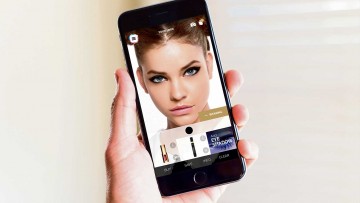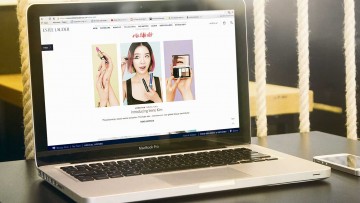Beauty is set to become the new five-star feel-good destination in 2016, promising the best it’s ever delivered of everything. It may sound like a marketer’s grand claim, but the evolution may already have started. After a dip in market growth in 2014, the focus shifted towards bespoke services, high-performance and new science skincare solutions, as well as immersive online portals to re-engage beauty buyers. The customer isn’t just always right – she is queen.
“Service is the new luxury,” says Chris Good, president of the Estée Lauder Companies, UK and Ireland. “In this age when the consumer can have whatever she wants, whenever she wants, however she wants it, I believe that exceptional service is going to become the most important differentiator.”
Reaching out to consumers
Part of this service is nurturing direct communication with the consumer via social media channels, including Twitter, Instagram and YouTube. Charlotte Tilbury pioneered this strategy to great effect when her beauty range launched in 2013, saying at the time: “Basically we’re hand-holding the customer through the whole process.” It gave Ms Tilbury’s brand a “heart beat” and earned a legion of devoted fans, but also started a new kind of dialogue between brands and their consumers.
When the consumer can have whatever she wants, whenever she wants, however she wants it, exceptional service is going to become the most important differentiator
It’s a conversation brands needed to be a part of again after online beauty vlogs started leading, and in many ways controlling, the debate. It started an evolution in the way people were talking about beauty and meant the dictatorial messaging of “do this to achieve that” was rewritten. However, brands are now reclaiming the relationship with their consumers to become a collaborative one and it is set to continue in 2016.
A case in point is Crème de la Mer that traditionally offers a structured skincare regime, but in 2015 let 200 key influencers opine on the uses of their Renewal Oil pre-launch, seeding it with nothing more than the instruction, “Here’s the oil, tell us how you would use it”. The responses were many and varied revealing the new launch to be a multi-functional, high-performance addition to the Crème de la Mer range.
Then there’s the creative process of which the consumer is already being asked to be a part, as evidenced by the launch of the Jo Loves Shot Candle, where the consumer decides the ingredient combination in a semi-bespoke experience, marking the first major development in home fragrance candles since Jo pioneered the gift of the scented candle 21 years ago.
The beauty evolution
Brands have already started to change the beauty vocabulary, with many eschewing “anti-ageing” for “anti anti-ageing”. Estée Lauder’s 2015 New Dimension launch was described by global brand president Jane Hertzmark Hudis as: “The next generation… of where the whole industry is going… and we are going to lead that revolution.” In this instance anti-ageing was reinvented as “the power of transformation”. “We are going to create an entirely new beauty category. Make-up is all about transformation, but why not skincare too?” added Ms Hertzmark Hudis.
As well as innovation and language, there’s also the environment. In the same year that Estée Lauder launched the Estée Edit, a “digital flagship” that offers visitors a personalised experience, L’Oréal Paris launched their MakeUp Genius app that serves as a L’Oréal counter and try-before-you-buy immersive experience via your smartphone. Plans for the latter to become an e-commerce app in 2016 are in the works.

L’Oréal Makeup Genius app allows customers to experiment with different looks using an image of their face
This also extends into the bricks-and-mortar flagship experience, which follows in the footsteps of the fashion model of adding standalone stores to the brand’s offering. While this has already started to happen – MAC’s flagship Pro store opened in Carnaby Street this month – 2016 will see more doors opening and “destination beauty” appearing on high streets around the country.
Innovation in beauty
A slow 2013-14, with growth of just 2.3 per cent, was also reinvigorated thanks to scientific innovation, which has kept the beauty and personal care category in growth, reports Mintel. At a time when beauty brands are having to compete harder for consumer loyalty, they are tempting them with new ingredients and customisable products, the report says. And it’s a strategy that’s working.
“Continual innovation in the beauty markets is ensuring spending in the category continues to grow,” says Mintel’s senior beauty analyst Charlotte Libby. Innovating isn’t only crucial for market growth, it’s also possible in a way it hasn’t been before, especially in the category of gadgetry. Until now the disparity between the efficacy of at-home devices compared with in-salon or in-clinic treatments was vast. However, with gadgets, such as the Clinique Sonic System, iluminage Skin Smoothing Laser and Philips relaunched Lumea Precision Plus hair removal device, that gap is closing. In the case of iluminage, their Skin Smoothing Laser uses “Cap Array technology, the same used by professionals, meaning we have been able to bring clinical machines to the at-home market for the first time”, says Bobae Kim, clinical director of iluminage
With the foundations laid in 2015, next year is marked as an exciting era of transformation for the beauty market. The collaborative relationship between brands and their consumers is putting an emotional connection back into beauty.


